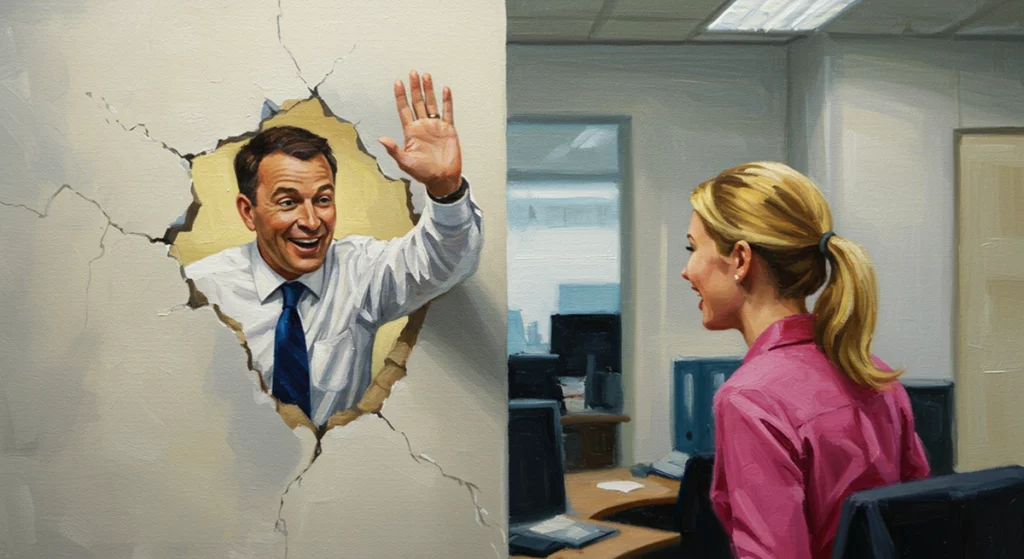TABLE OF CONTENTS
Culture of Diversity
This article will explore diversity, culture, and the culture that diversity in the workplace can instill.
While many people are familiar with the concept of cultural diversity, the culture that surrounds the concept of diversity is a little more complex. As defined, cultural diversity refers to a workplace or other institution or community, that incorporates many different cultural groups, encourages different cultural expressions, and expects respect for other cultures that do not form part of the dominant cultural group. Here we aim to foster a deeper understanding of the culture that supports cultural diversity within institutions.

Cultures build a better world
Cultural diversity ensures new and fresh ideas in the workplace and brings about new perspectives to be considered. All of us are somehow connected to culture, even when we believe we are not, or actively try to avoid it. Culture often keeps people grounded and brings them together when it is time to grieve or time to celebrate. Each culture has its own celebrations and its own traditions surrounding bereavement.
Defining Cultural Diversity
In the context of the workforce, cultural diversity refers to a workforce that is represented by individuals belonging to many distinct cultures. Diverse groups of people in a business bring innovation to the forefront.
A successful workplace culture will encourage socio-cultural differences and cultural expressions among staff. When staff is encouraged to be themselves and they are valued and feel heard, they are naturally more loyal and productive. Cultural diversity in society allows for diverse contributions to the social identity of a community. Cultural diversity is not solely reserved for elements of race or ethnicity and, especially in a workplace environment, can also encompass elements like orientation, different interests, skills, and socioeconomic backgrounds.
Why is Cultural Diversity important?
Cultural diversity is a road to a more understanding society through engagement with people from different backgrounds. Differences within a workplace encourage innovative thinking through the respect and appreciation of different perspectives. When diverse people come together and share their life experiences and specific values with one another in harmony, it naturally combats discrimination as people learn to understand perspectives they had no insight into before.
We use culture to make sense of our environments, so in most societies, acceptance of diversity is difficult at first. But that should not discourage progress in this regard, as a continued contribution is valuable in the long run.
Cultural Diversity and Society
The only way that we can understand how other cultures work is through a diverse lens that is informed by people from different ethnic backgrounds. This is how we learn about different cultural expressions and their values in the workplace. We are able to engage with more ethnic groups in a diverse environment and learn from each other to become a more productive team.
While we are not able to understand all cultural ideas and the perspectives of different ethnic groups, in modern societies, we should be able to respect different cultural groups for their individualism and not discriminate against them.
Cultural Diversity and Inclusion in the workplace
It is not enough to simply encourage cultural diversity on paper, actual policies need to be put in place, and those policies need to contain a section where cultural diversity is clearly defined. Within an inclusive cultural context, cultural diversity defined is almost identical to multiculturalism and the terms are sometimes used interchangeably. However, the commitment to embracing cultural diversity is sometimes bigger than people realize. Socio-cultural differences must be respected, cultural practices must be observed, and diverse cultures have different languages, so people need to be able to speak their own language in the workplace. If a business wants to support cultural diversity, then this is something they must commit to, along with the many benefits of cultural diversity.
When a business is able to support cultural diversity fully, people from different cultural groups can and do pool their resources and share their experiences for the benefit of the group.
Benefits of Cultural Diversity
Where people feel valued, respected, and seen, a much higher level of productivity is displayed, and a more productive team who can express their own style delivers higher quality services. Innovative thinking is aided by varied perspectives. An inclusive cultural context promotes increased compassion within a culturally diverse team. People with different backgrounds have more efficient problem-solving abilities. Abundant diversity with many cultural ideas increased diversity of thought.
Cultural Competence
In order for cultural diversity to survive in a business, there needs to be a level of cultural competence among management and employees that allows for an adequate understanding of cultural differences so that people from different cultural backgrounds are equipped to embrace cultural diversity.
Freedom of expression and freedom of religious practices are basic human rights, along with the freedom to express gender roles, etc. A person also has the responsibility to avoid imposing the values of the dominant culture or dominant group on minority groups. People are entitled to different beliefs and diversity opens the door to allowing different religions and different cultures into the same work environment.
While this dynamic has many benefits, we must also apply the proper context here and admit that there are challenges. This is where cultural diversity training or even competence training is a necessity, as it has the potential to combat many of these challenges.

Difference Between Cultural Competence and Cultural Humility
Cultural competency is a skill that exists in professional atmospheres that exists to address imbalances in cultural dynamics in the workplace. It involves learnable tools that allow for effective communication and respect in a culturally diverse workplace and ensures that cultural expressions are not compromised.
Cultural Humility is a personal journey of reflection of own beliefs and biases, including behavior toward those belonging to other cultural backgrounds. People learn about other groups and their cultural heritage and begin to understand more about their own cultural background and how that fits into the greater position of society.
The Quest for Cultural Relativism
When it comes to understanding the culture surrounding diversity, we start with the principle of relativism. This refers to the practice of not judging another culture by the ethical bounds of your own culture. This is a difficult skill to master and requires a better understanding of the concept of cultures as a whole to even attempt.
The difficulty exists because we measure morality, dignity, and right and wrong according to our culture. Most cultures in society might rightly share stances on morality to some extent, but there are some that can have significant differences. Harmony between diverse groups may require people to refrain from judging even outlier cultures according to their own sense of morality that is informed by larger cultures. Especially topics like polygamy and consenting age in some cultures are normal, while others consider them expressly immoral.
True cultural relativism promotes cultural diversity in a profound way, as no ethnic group or minority group will feel judged or left out, but it is difficult for people to master and this level of cultural competency is a life-long pursuit for most.
Where does cultural competence begin?
The vast majority of us encounter different cultures throughout our daily lives; globalization and technology in the world lend to our exposure to other cultures. Most people will only get the opportunity to engage with and befriend people from other cultures during their school years. Some might even travel for higher education and obtain their master’s degree or bachelor’s degree from another country.
Exposure to diverse cultures differs from person to person and in the specific region of the country where they grew up. Some are more isolated than others, but through dedication and continued contribution to their own cultural competence, anything is possible.
True cultural competence begins at home. Exposure and education about cultural diversity in childhood are best, but where that has not been the case, an individual can take personal steps to familiarize themselves with the cultures of the world. Both online resources and corporate training programs are great options for people to work on their dedication to a culturally diverse future.

The future of cultural diversity
Cultural diversity is not a new concept, but it also does not seem to be going anywhere. The fact is that the cultures of the world are integrating more and more as time goes on. The world as a whole is becoming more culturally diverse, and so are workplaces. Companies are employing diverse groups either locally and internationally.
As cultural diversity grows, cultural competence becomes non-negotiable, as someone who lacks competency will not make it in a workplace that values cultural diversity. The world is constantly moving towards integration and diversity, especially in first-world countries. Even the customer and client base have come to expect cultural diversity from their suppliers and some will go as far as to boycott companies that do not deliver on cultural diversity. This is only adding fuel to the fire of cultural diversity.
People are proud of their cultures and want to spread awareness of their culture and the norms and values associated with it. More people also want to learn about, and incorporate other cultures into their daily lives. The culture surrounding diversity is adding to positive growth in businesses.










